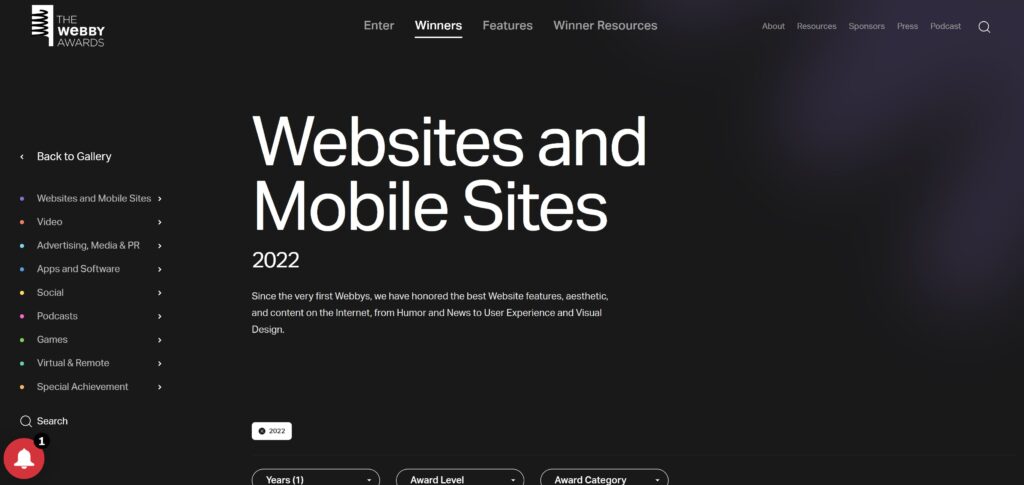As you browse blogs and brand sites, you might notice familiar features and patterns as you navigate across the web. That’s because – like fashion, beauty and decor – even web design follows the ebbs and flows of popular trends. And right now, as our Internet browsers improve their capabilities and our computers begin to emulate the functionality of our smartphones, the look and feel of the Internet is in a constant state of change. Here, we’ve rounded up a few of the trends you’re likely to see more and more of in 2023.
One-page websites
Maybe our attention spans are shorter, or maybe there’s just more competition and a need to get to the point faster – spreading out who you are and what you do over several pages has been on its way out for a while. Many brands have made it incredibly easy to understand their mission statement, business practice and how-to-buy, all without more than a scroll down the page. Great examples include intimates brand Harper Wilde, Cook Collective, and Sakari Sake.
Fewer hero images, more typography
For a quite a while, a lot of the web has been dominated by hero images that conquer web pages, a minimalist-friendly way of visually capturing the user, setting a tone and showcasing a brand through photos. But we may have become oversaturated with the style, making the effect a little less striking than before.
Instead, some sites are leaning on the creative use of beautiful typography to become its own eye-catching introduction to a brand’s identity and online experience. Fonts are their own artistic medium, able to capture time and place, as well as leverage psychology and brain mechanics to guide your reading experience. Fonts can even be altered or custom-made to best fit your brand. Often channeling print magazine design, the font-forward web design approach can be minimalist or maximalist, it can use design and creative copywriting to capture users, and it can even incorporate motion graphics and user interaction into the web experience.
Check out examples from the innovative commerce company Radar, Jomol Design, or Azzerad Studios.
Tasteful motion graphics
Like with some of the font examples above, motion graphics can add a touch of delight or usability to a website. We’ve already seen the rise of parallax scrolling to create motion on web pages across the Internet. And as computer and web browser capabilities improve, and motion design tools become more available to the average user, adding interactive touches can boost your site experience, rather than weigh it down.

Great use of motion design on the web is actually a category at the annual Webby Awards – take a look at their collection of winners and nominees to inspire your own site’s possibilities.
App-like experiences
Web designers are charged with the task of creating not just one beautiful website, but also a version that works well on mobile. This is a problem often solved by responsive design – websites detect your device and screen dimensions and adapt accordingly – but as more than half of all web traffic comes from mobile devices, the mobile version is beginning to take priority, potentially bringing the mobile experience to your desktop, rather than the other way around.
As mobile experiences increasingly become the default, we may begin to see the principles of app design applied to web design, altering the desktop user experience.
Greater accessibility and inclusivity
A detail overlooked by many U.S. companies is that their websites are actually not usable for many people with disabilities – a 2020 report shows that 98% of US-based web pages fail to comply with accessibility requirements, which is actually a failure to meet standards of the Americans with Disabilities Act and puts companies at risk of legal action. Since the U.S. Supreme Court ruled against Domino’s Pizza in 2019, website accessibility lawsuits have increased significantly, and the DOJ has released guidelines for businesses and governments to reference.
These fundamental changes don’t stop at compliance. The last few years have shown us that brands are not immune or exempt from waves of social change, whether that’s by making diversity and inclusion statements, offering employee benefits, or making public shows of support. On a website, this can play out through the faces users see, word choice like inclusive language, and even the design elements themselves – examples include throwing out gender-coded color palettes, offering increased gender options for user profiles, and focusing inventory categorization by product, rather than gender.
The Internet changes every day, and we’re in a period of endless possibility for brands to create exciting experiences that engage users and keep them coming back. There’s no time like now to step out of conventional design and into a new online identity.

